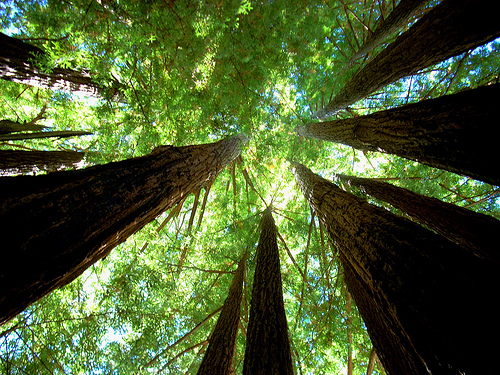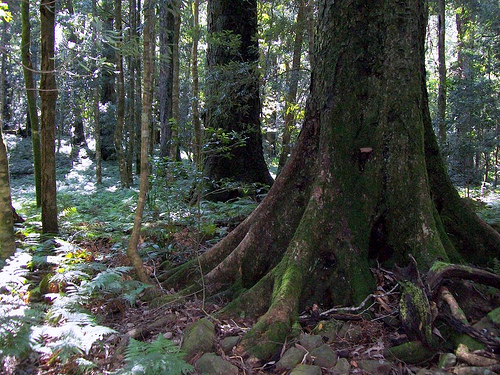James Cameron may have imagined giant hometrees in Pandora with height more than 150 meters in his 3D animation movie “Avatar”. But our own planet Earth is also not too behind in this in reality. Do you know the tallest living organism in our planet? We have listed down all the competitors in the race here.
1. Coast Redwood (Sequoia sempervirens) – Tallest in North America and the TALLEST in the planet. It is an evergreen, monoecious tree with a life span more than 3000 years. Currently found in coastal California and the southwestern corner of Oregon in the United States, this species of tree can grow beyond 100 meters. The tallest known living Redwood is 115.3 meters (379 feet) known as Hyperion. It was discovered September 8, 2006, by Chris Atkins and Michael Taylor, naturalists who explored California coast redwoods including Redwood National Park.
2. Australian Mountain-ash (Eucalyptus regnans) – The Australian Mountain-ash, a species of Eucalyptus native to southeastern Australia, in Tasmania and Victoria, is a contender from Oceania. It is defnitely one of the tallest species in the planet and in very close run with Coast-Redwood. It’s always debatable which species is the tallest, but the Mountain-as is the undoubtedly the evergreen tree os the tallest flowering plant with an average heightof around 80 meters. The tallest measured living specimen, named Centurion, stands 99.6 metres tall in Tasmania. But there are many controversial claims exceeding more than 120 meters. Due to heavy deforestation, logging in Australia in lste 19th century, it is believed that many of the tallest specimens fell prey to humans. Historically, the tallest individual is claimed to be the Ferguson Tree, at 132.6 metres (435 ft), found in the Watts River region of Victoria in 1871. The claim considered to be unreliable. The most reliable claim stands at 112.8 metres (370 ft) in 1880 by a surveyor, George Cornthwaite, at Thorpdale, Victoria.
3. Yellow Meranti (Shorea faguetiana) – The contender in this category from Asia is a Yellow Meranti. This tree is in Tawau Hills Park of Malaysia. The tree is measured as 88.32 Meters (about 290 feet) in height. This is supposed to be the tallest tropical tree in the planet.
4. Caucasian Fir (Abies nordmanniana) – The tallest native tree of Europe is the Caucasian Fir, which grows in the Caucasus as well in Turkey. Alan Mitchell (1996) gives 68.6 m (225 feet) as its greatest height.
Vladimir Dinets (e-mail 1998) gives a maximum height of 78 m (255.9 feet) near Mzymta River in the Caucasian National Reserve, Russia.
5. Patagonian Cypress (Fitzroya cupressoides) – This large evergreen, dioecious tree species is the contender from South America. It is not only the tallest in South America but also one of the logest living species known in the planet. The tallest specimen though not recorded may be more than 70 meters in Argetina. Guardaparques (park rangers) state in Argentina has trees ranging 60-70 meters that can be found on the southern branch of Lake Menendez, but that area is restricted to visitors and there aren’t trails or roads to get there.
6. Antarctica is out of this contest as no tree grows in the continent.






Recent Comments